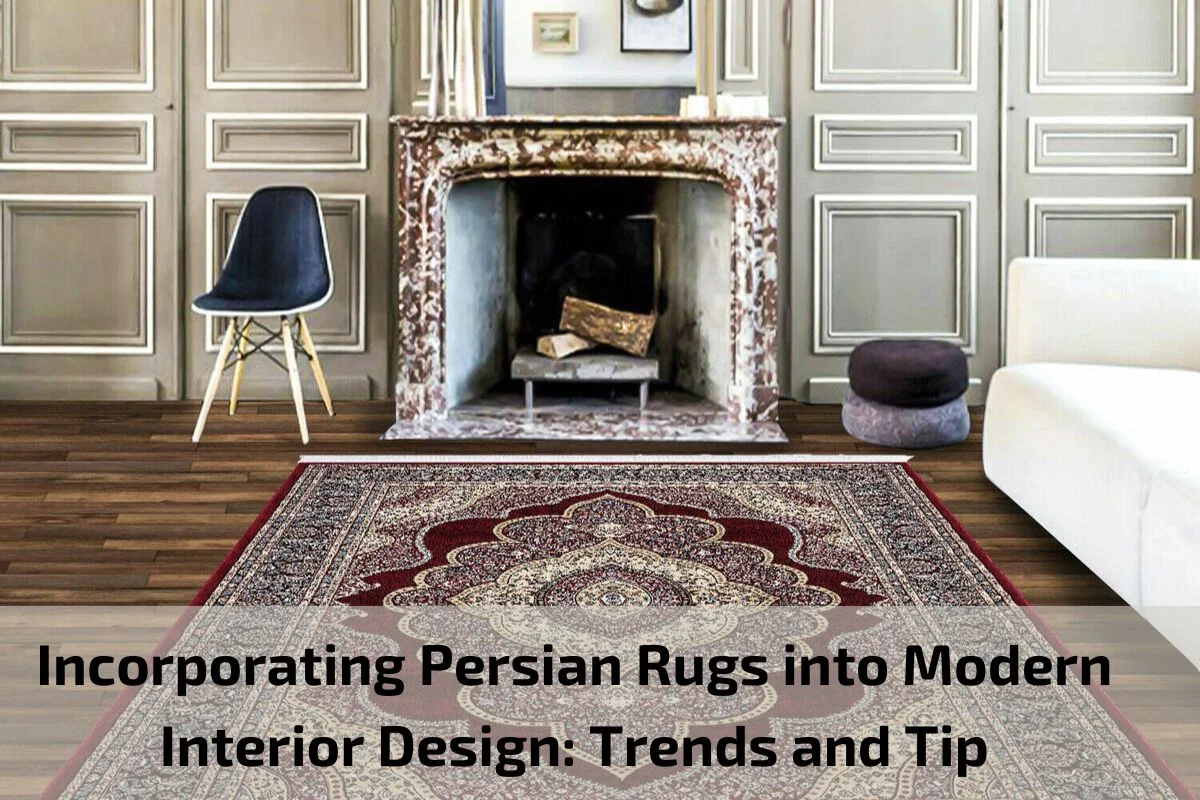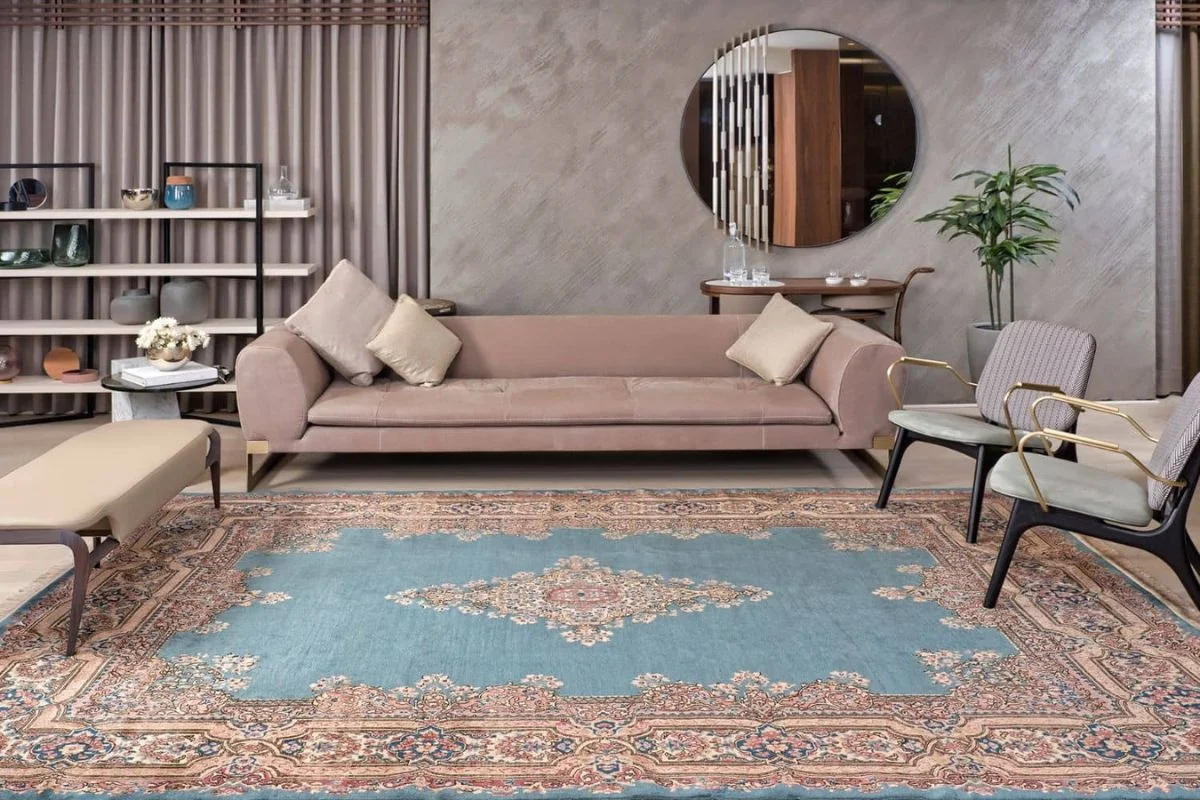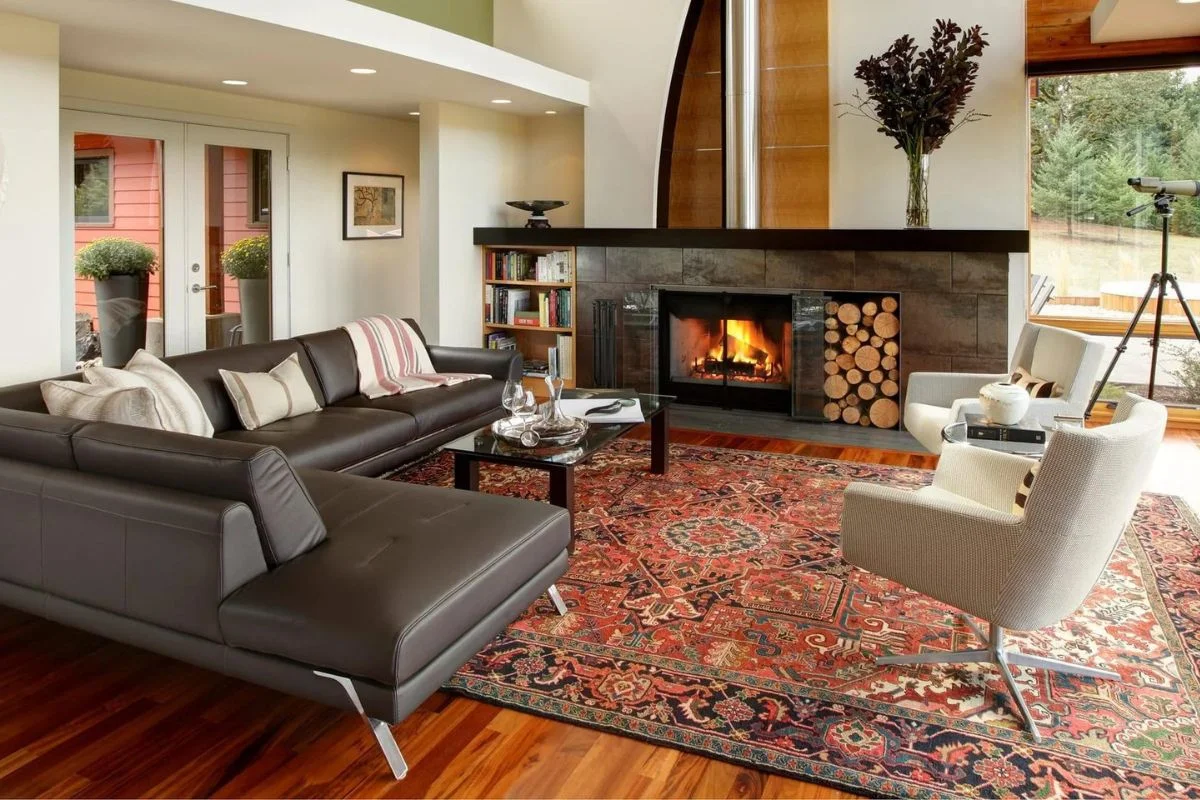
As timeless treasures steeped in history and craftsmanship, Persian rugs have long held a revered place in the world of interior design. While these exquisite works of art have roots that stretch back centuries, they continue to captivate contemporary designers and homeowners alike, seamlessly integrating into modern interior spaces with their unmatched beauty and versatility.
Incorporating Persian rugs into modern interior design offers a captivating juxtaposition of old-world charm and contemporary style, creating spaces that are rich in character and warmth. From minimalist lofts to eclectic bohemian abodes, Persian rugs have the remarkable ability to anchor a room, infusing it with a sense of heritage and sophistication.
Exploring the Diverse Styles and Patterns of Persian Rugs
Persian rugs, renowned for their exquisite beauty and intricate craftsmanship, stand as enduring symbols of artistry and culture. These rugs, woven with centuries of tradition and heritage, boast a rich tapestry of styles and patterns that reflect the diverse regions and artisanal techniques of Iran. From the vibrant hues of Tabriz to the geometric motifs of Shiraz, Persian rugs encapsulate the essence of Persian artistry and storytelling.
In this exploration, we delve into the captivating world of Persian rugs, unraveling the diverse styles and patterns that adorn these timeless masterpieces. From the grandeur of medallion designs to the delicacy of floral motifs, each Persian rug tells a unique story, weaving together threads of history, symbolism, and craftsmanship. Join us on a journey through the kaleidoscope of Persian rug styles and patterns, where every knot and weave carries a legacy of beauty and tradition.
Brief Overview of Persian Rugs and Their Significance
Persian rugs, also known as Iranian carpets, stand as iconic symbols of Persian culture and craftsmanship. Woven with meticulous care and attention to detail, Persian rugs boast a centuries-old tradition that dates back to ancient Persia, now modern-day Iran. These rugs are not merely floor coverings but rather exquisite works of art that encapsulate the history, culture, and artistic heritage of the Persian people.
Persian rugs are renowned for their unparalleled beauty, intricate designs, and superior quality. They are handcrafted by skilled artisans using traditional techniques that have been passed down through generations. Each Persian rug is a testament to the artisan’s skill, patience, and dedication, reflecting the rich cultural heritage of Iran.
Beyond their aesthetic appeal, Persian rugs hold deep symbolic significance in Persian culture. They serve as expressions of identity, pride, and cultural heritage, often depicting motifs and patterns that carry historical and religious significance. From floral designs symbolizing rebirth and renewal to geometric patterns representing harmony and unity, Persian rugs are imbued with layers of meaning that reflect the values and beliefs of the Persian people.
Persian rugs are also prized for their durability and longevity. Made from high-quality materials such as wool, silk, and cotton, these rugs are renowned for their resilience and ability to withstand the test of time. With proper care and maintenance, Persian rugs can last for generations, becoming cherished family heirlooms passed down from one generation to the next.
Integrating Persian Rugs into Interior Design
Persian rugs, with their intricate designs and rich cultural heritage, can add a touch of elegance and sophistication to any interior space. Here are some tips for seamlessly integrating Persian rugs into your interior design:
Selecting the Right Rug: Choose a Persian rug that complements the overall aesthetic of your space. Consider factors such as the color scheme, furniture style, and existing décor when selecting a rug. opt for a rug that enhances the ambiance of the room and serves as a focal point for the design.
Mixing Patterns and Textures: Persian rugs often feature intricate patterns and motifs that can complement or contrast with other patterns in the room. Mix and match patterns and textures to create visual interest and depth in your space. Pairing a Persian rug with modern furniture or minimalist décor can create a striking juxtaposition that adds character to the room.
Layering Rugs: Experiment with layering rugs to create dimension and visual intrigue in your space. Layering a smaller Persian rug on top of a larger neutral rug can draw attention to the intricate details and designs of the Persian rug while providing additional warmth and texture to the room.
Creating Contrast: Use Persian rugs to create contrast and balance in your space. If you have a predominantly neutral color scheme, a vibrant Persian rug can inject color and personality into the room. Conversely, if your space is filled with bold colors and patterns, a more subdued Persian rug can help anchor the design and provide a sense of harmony.
Balancing Proportions: Pay attention to the size and proportions of your Persian rug in relation to the furniture and layout of the room. A rug that is too small or too large for the space can disrupt the visual flow and balance of the room. Ensure that the rug is proportionate to the size of the room and the furniture arrangement for a cohesive look.
Highlighting Architectural Features: Use Persian rugs to highlight architectural features and focal points in your space. Place a rug in front of a fireplace, under a dining table, or in a hallway to draw attention to these areas and create a sense of coziness and intimacy.
Accessorizing with Accents: Enhance the beauty of your Persian rug by accessorizing with complementary accents such as throw pillows, curtains, and artwork. Choose accents that pick up on the colors and motifs of the rug to create a cohesive and harmonious look throughout the room.
Advantages and Disadvantages of Persian Rug
Advantages of Persian Rugs:
Timeless Elegance: Persian rugs are known for their timeless and intricate designs, adding a touch of elegance and sophistication to any space.
Cultural Significance: These rugs carry deep cultural and historical significance, often featuring motifs and patterns that tell stories of the region and its traditions.
Craftsmanship: Persian rugs are handmade by skilled artisans using traditional weaving techniques, showcasing a high level of craftsmanship and attention to detail.
Durability: Made from high-quality materials like wool or silk, Persian rugs are durable and can withstand heavy foot traffic, making them a long-lasting investment.
Unique Designs: Each Persian rug is a unique piece of art, with patterns and designs that vary based on the region, tribe, or artisan, adding a personalized and distinctive touch to your space.
Investment Value: Authentic Persian rugs are often considered valuable assets that appreciate in value over time, making them a potential investment for collectors.
Disadvantages of Persian Rugs:
Cost: Authentic Persian rugs can be expensive due to the labor-intensive, handcrafted nature of their production. This cost may be a limiting factor for some buyers.
Maintenance: Persian rugs require proper care and maintenance to preserve their beauty. They may be more challenging to clean, and professional cleaning services can add to the overall cost.
Availability: Genuine Persian rugs may be harder to find, especially if you’re looking for a specific design or size. The limited availability can be a drawback for those with specific preferences.
Allergies: Some individuals may be sensitive to the materials used in Persian rugs, especially if they have allergies to wool or other natural fibers commonly used in these rugs.
Modern Aesthetics: While Persian rugs are timeless, some may find that their traditional designs do not align with modern or minimalist interior design preferences.
Imitations and Fraud: The market is flooded with imitation Persian rugs, and distinguishing authentic ones from replicas requires expertise. Buyers need to be cautious to avoid fraudulent purchases.
Exploring the Diverse Styles and Patterns of Persian Rugs
Persian rugs are celebrated for their diverse array of styles and patterns, each reflecting the unique cultural heritage and regional influences of Iran. Here, we delve into the rich tapestry of Persian rug designs:
Medallion Designs: One of the most iconic patterns found in Persian rugs is the medallion design. Typically placed at the center of the rug, the medallion is often surrounded by intricate floral or geometric motifs.
Floral Patterns: Persian rugs frequently feature floral patterns inspired by nature, with motifs such as roses, tulips, and blossoms intricately woven into the design. These floral motifs symbolize beauty, growth, and the cycle of life.
Geometric Patterns: Geometric patterns are another hallmark of Persian rug design, with motifs like diamonds, hexagons, and stars adorning the surface of the rug. These geometric patterns symbolize harmony, balance, and unity.
Heart Design: Also known as the fish design, the Heart pattern is characterized by a central rosette surrounded by curling leaves and fish-like shapes. This motif is believed to represent water, fertility, and abundance.
Garden of Paradise: The Garden of Paradise design features a central medallion surrounded by a lush garden landscape filled with trees, flowers, and animals. This design symbolizes paradise and is often associated with prosperity and happiness.
Tree of Life: The Tree of Life motif is a common theme in Persian rug design, depicting a tree with branches extending into the heavens and roots reaching into the earth. This motif symbolizes the interconnectedness of all living things and the cycle of life.
Animal Motifs: Persian rugs sometimes feature motifs of animals such as birds, horses, and lions, each carrying its own symbolic meaning. These animal motifs are often woven into the rug’s borders or scattered throughout the field.
Prayer Rugs: Prayer rugs are a special category of Persian rugs designed for use during Islamic prayer. These rugs typically feature a mihrab, or prayer niche, at one end, which points towards Mecca, along with intricate geometric and floral designs.
Qashqai Tribal Designs: Qashqai rugs, woven by nomadic tribes in Iran, often feature bold geometric patterns and vibrant colors. These rugs reflect the nomadic lifestyle and cultural traditions of the Qashqai people.
Kilim Rugs: Kilim rugs are flat-woven rugs characterized by bold colors and geometric patterns. These rugs are lightweight and versatile, making them ideal for use as wall hangings, floor coverings, or decorative accents.
Maintenance and Care of Persian Rugs
Preserving the beauty and longevity of your Persian rug requires diligent care and attention. Here are essential tips for maintaining and caring for these intricate and valuable pieces:
Regular Vacuuming: Vacuum your Persian rug regularly to remove surface dirt, dust, and debris. Use a vacuum with a brushless suction head or set it to a height that won’t damage the rug’s fibers.
Rotate the Rug: To ensure even wear, rotate your Persian rug at least once a year, especially if it’s exposed to sunlight or foot traffic. This helps prevent one area from fading or wearing out more quickly than others.
Use Rug Pads: Place rug pads underneath your Persian rug to provide extra cushioning and prevent slipping. Rug pads also help protect the rug and the underlying floor by creating a barrier between them.
Avoid Direct Sunlight: Prolonged exposure to direct sunlight can cause colors to fade over time. Position your Persian rug away from windows or use curtains and blinds to reduce the amount of sunlight it receives.
Attend to Spills Immediately: Accidents happen, but swift action is crucial. Attend to spills immediately by blotting the area with a clean, dry cloth. Avoid rubbing, as this can spread the stain. For more stubborn stains, consult professional rug cleaners.
Professional Cleaning: Periodically, engage professional rug cleaners for a thorough cleaning. Avoid DIY methods that involve harsh chemicals or excessive water, as these can damage the rug’s fibers.
Inspect for Moth Damage: Persian rugs are susceptible to moth damage, especially if stored in dark and undisturbed areas. Regularly inspect both sides of the rug for signs of moths or larvae, and consider professional mothproofing if necessary.
Address Pet Stains Carefully: If your Persian rug suffers pet stains, clean the affected area promptly and thoroughly. Use a mixture of white vinegar and water to neutralize odors, and again, consider professional cleaning if needed.
Roll for Storage: If you need to store your Persian rug, roll it with the pile facing inward to protect against dust and potential damage. Store the rug in a cool, dry place, and avoid placing heavy objects on top of it.
Seek Professional Repairs: If your rug sustains damage, such as loose threads or frayed edges, seek professional repairs from a reputable rug restoration specialist. Attempting DIY repairs may worsen the damage.
Conclusion
In conclusion, Persian rugs stand as timeless masterpieces that transcend mere floor coverings, embodying centuries of artistry, culture, and tradition. From their intricate designs to their rich symbolism, Persian rugs captivate admirers around the world, serving as enduring symbols of beauty and craftsmanship.




